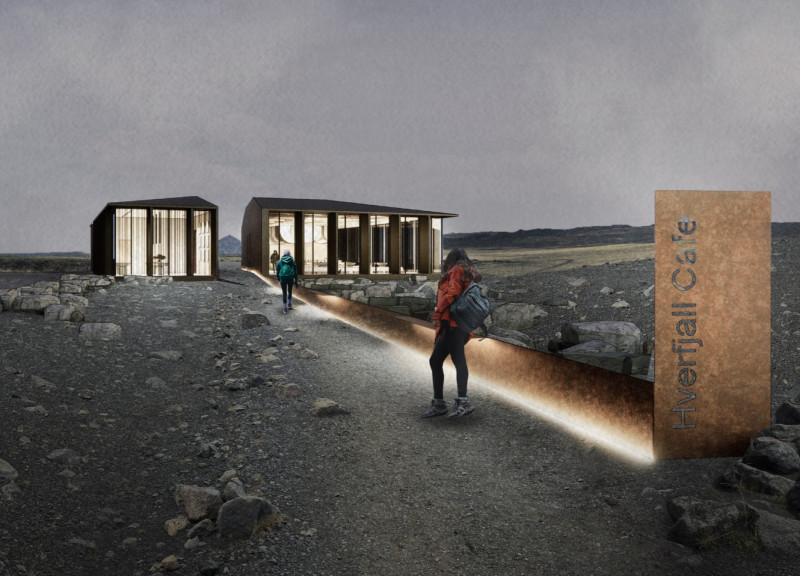5 key facts about this project
Hverfjall Coffeeshop is located at the base of the Hverfjall volcano in Iceland, in a landscape known for its unique geological features. The design blends the building with its natural surroundings, functioning as a café, exhibition space, and gender-neutral restrooms for visitors. The overall concept emphasizes a connection between the structure and the environment, encouraging visitors to enjoy and engage with the natural beauty around them.
Building Form and Materiality
The structure takes the shape of a perfect square, covered in charred wood that complements the dark volcanic landscape. This material choice allows it to blend in while providing durability against the elements. Openings are cut into the structure, creating entrances and sightlines that frame views of the volcano and the surrounding area. Weathered steel panels mark the entrance, guiding visitors into the warm interior space.
Spatial Organization
Inside, the building features distinct volumes that serve specific purposes. These include the café, exhibition area, and restrooms. This layout promotes flexibility, allowing different parts of the building to be used at the same time without interference. A central path runs through the space, making it easy for visitors to navigate while maintaining a clear connection to the outdoors.
Structural Considerations
A concrete plinth supports the building, providing stability. Above it, a waffle ceiling made of glulam pieces adds not only strength but also a pleasant visual detail. This ceiling system enhances the building's insulation as well, helping to maintain a comfortable environment for visitors.
Engagement with the Landscape
A central feature of Hverfjall Coffeeshop is its focus on views. The café boasts a large glass wall that offers a panoramic look at Hverfjall and the hiking trails nearby. Seating is arranged to make the most of these views, inviting guests to enjoy their surroundings. The exhibition hall is designed to face the volcano directly, allowing visitors to learn about its geological significance while observing it through large windows.
The design incorporates voids that create a strong link between the interior and the striking landscape outside. As people move through the space, they can appreciate the continuity between the built environment and the natural world surrounding them.






















































